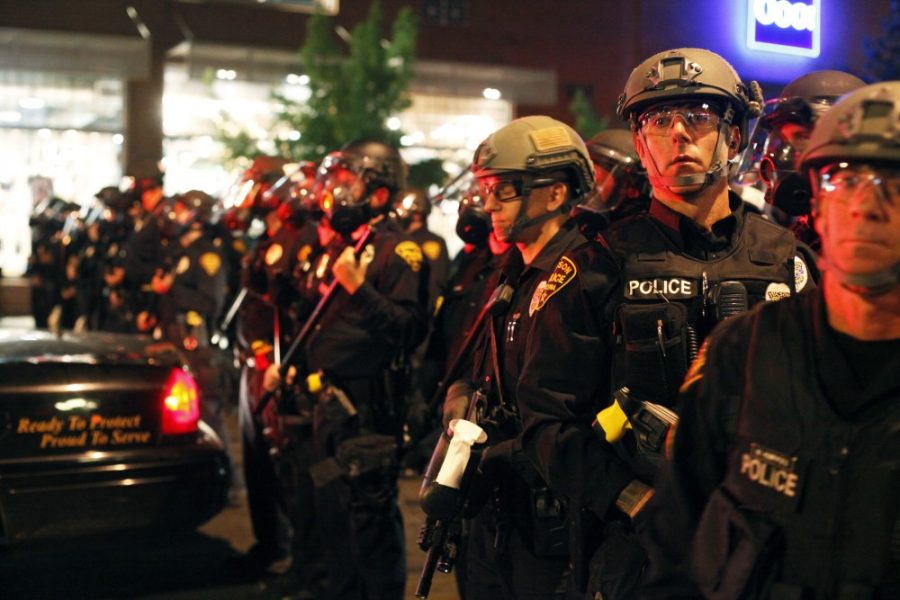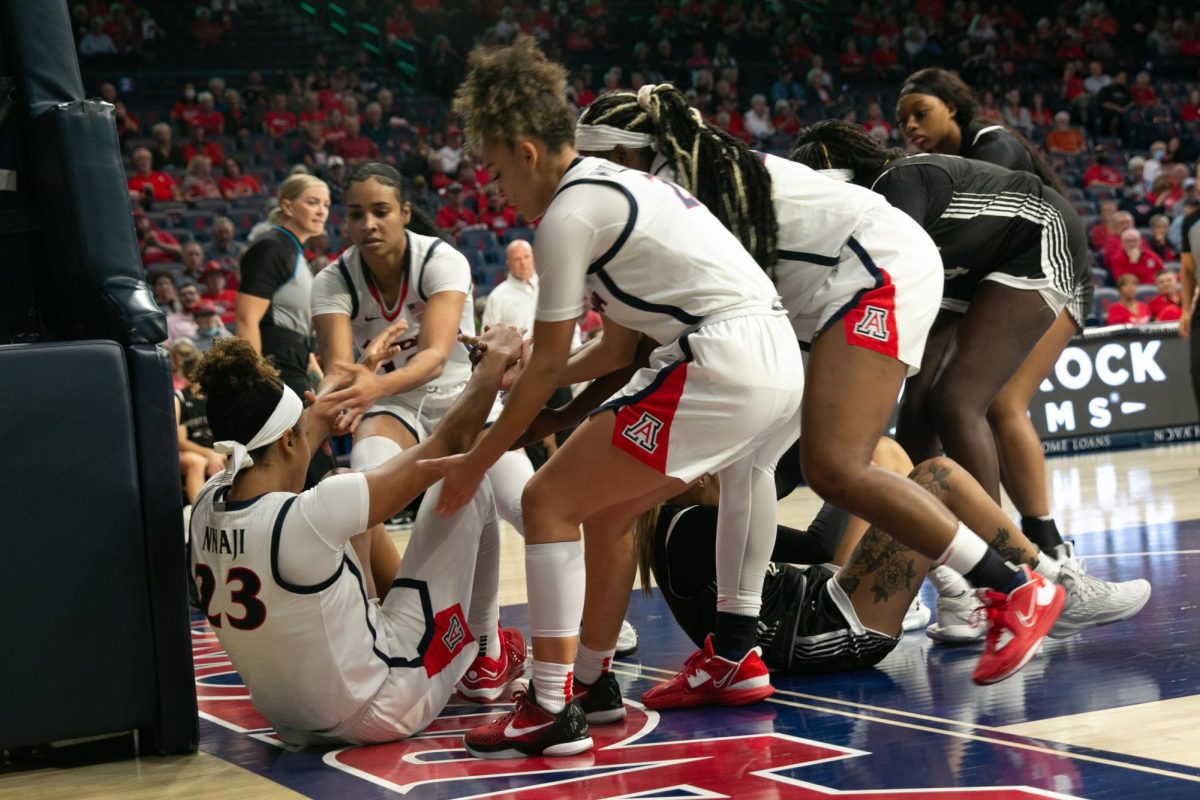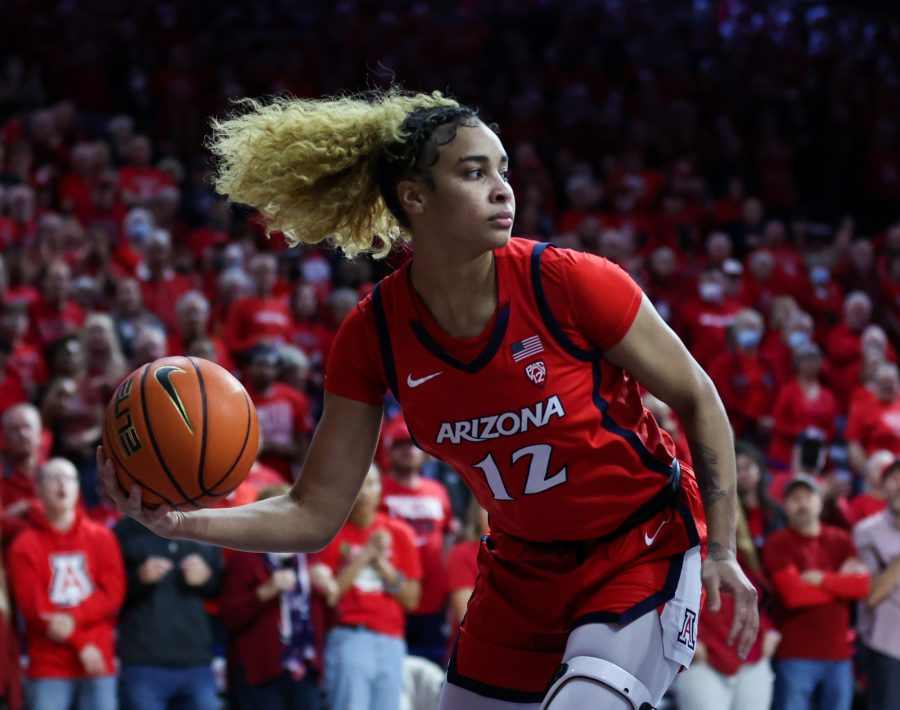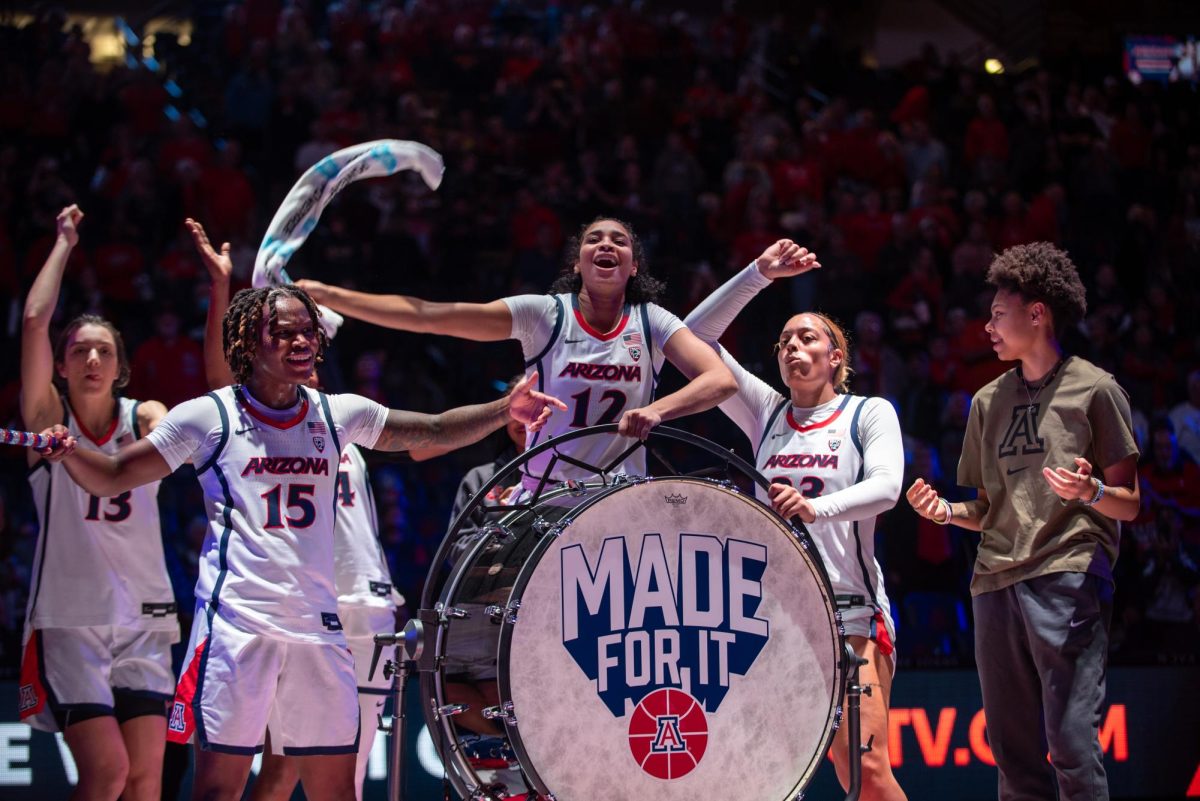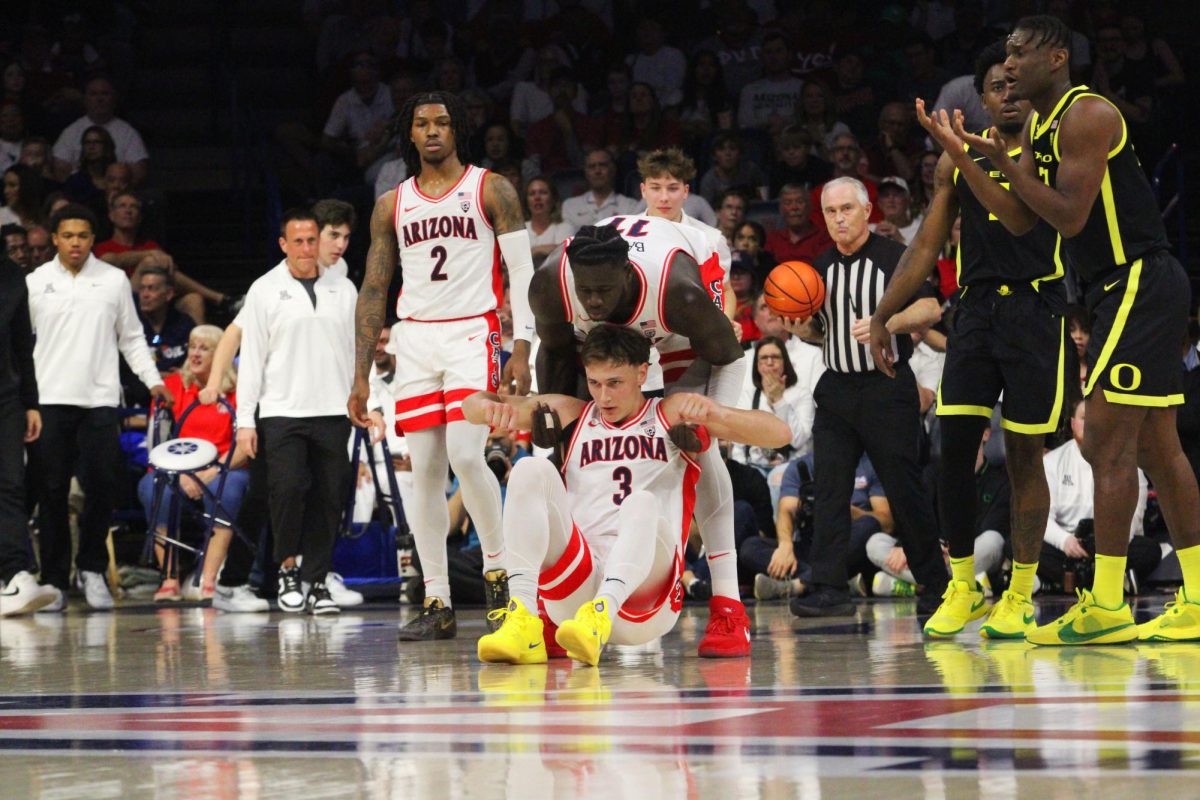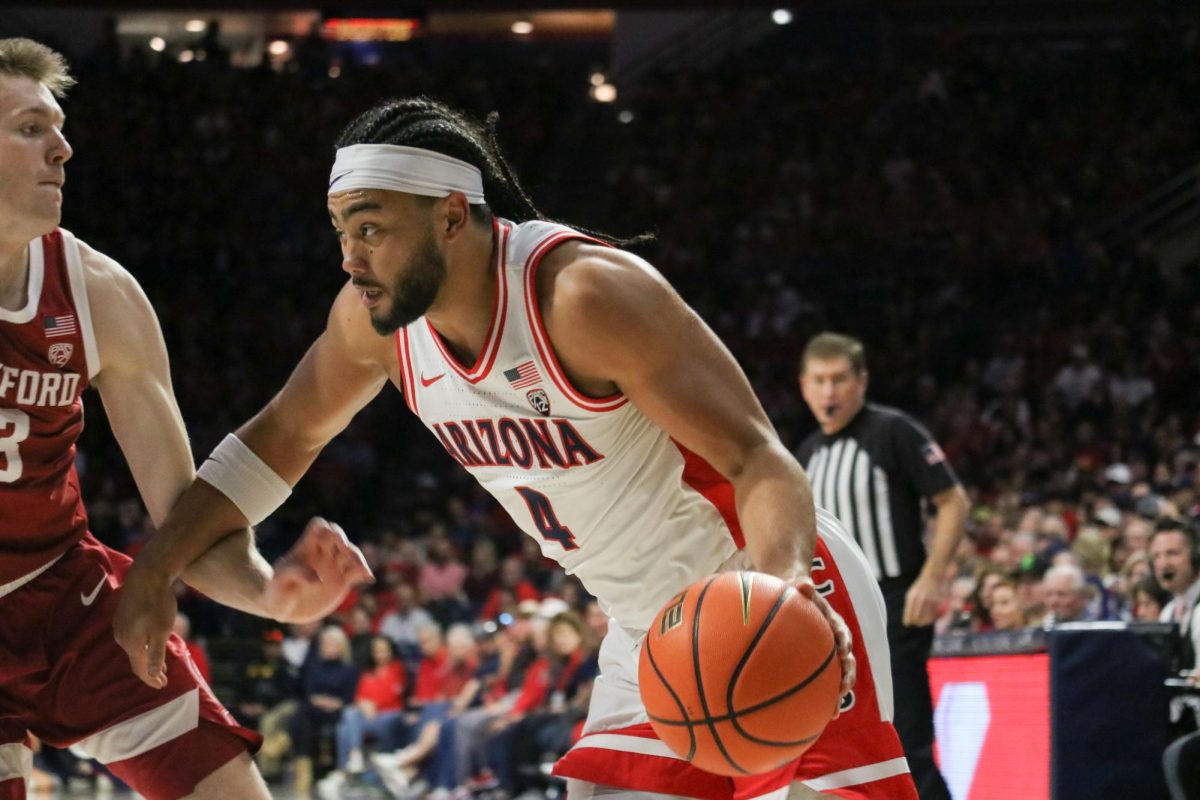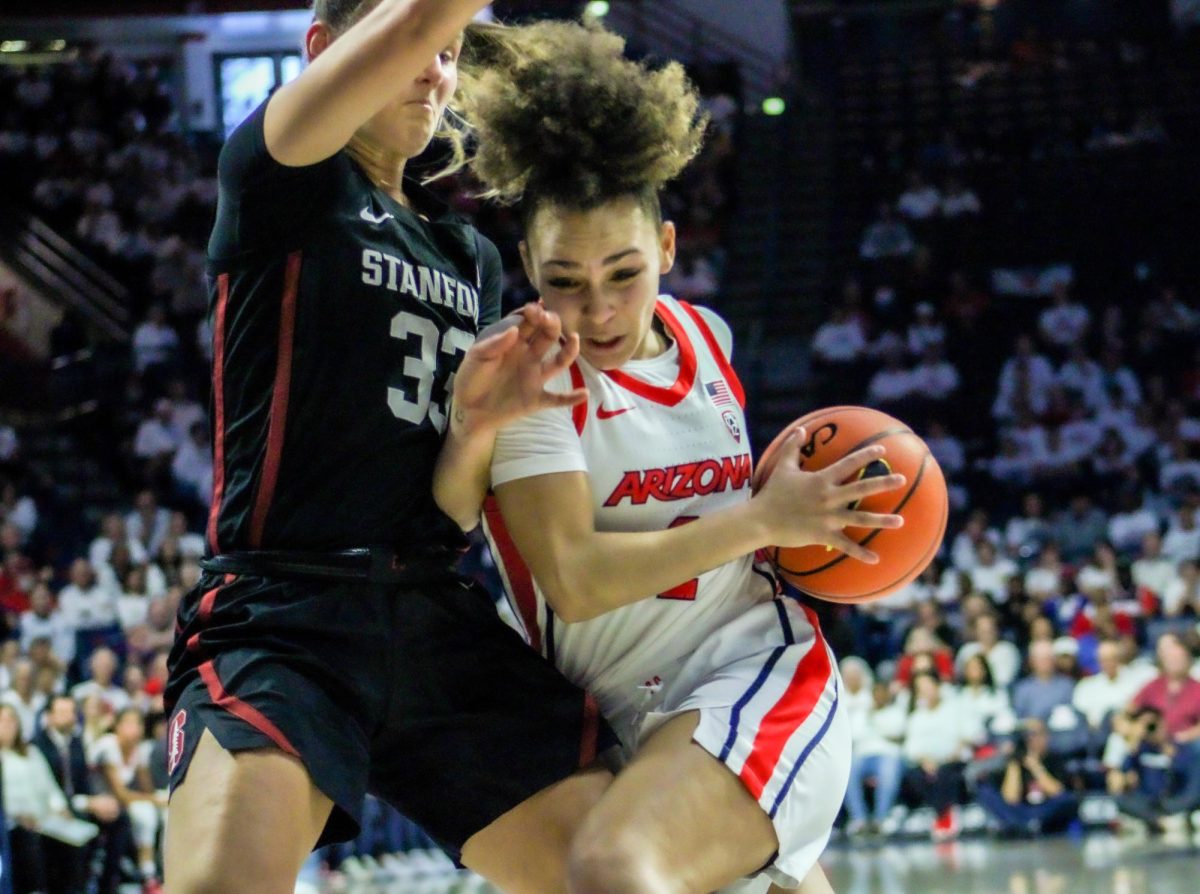Prior to the Arizona men’s basketball team’s loss to the Houston Cougars on Thursday night, the Marshall Foundation released a letter to storeowners on University Boulevard in conjunction with the Tucson Police Department, the University of Arizona Police Department, UA Community Relations and Main Gate Merchants.
The letter stated that Main Gate Square, along with other areas, were designated as a “Celebration Zone” and that TPD and UAPD would work as an “Entertainment Venue Team” to “insure safety & business profitability.” The letter also lists a series of recommended measures for businesses to take before, during and after the game.
A screenshot of the letter obtained by the Daily Wildcat can be viewed below.
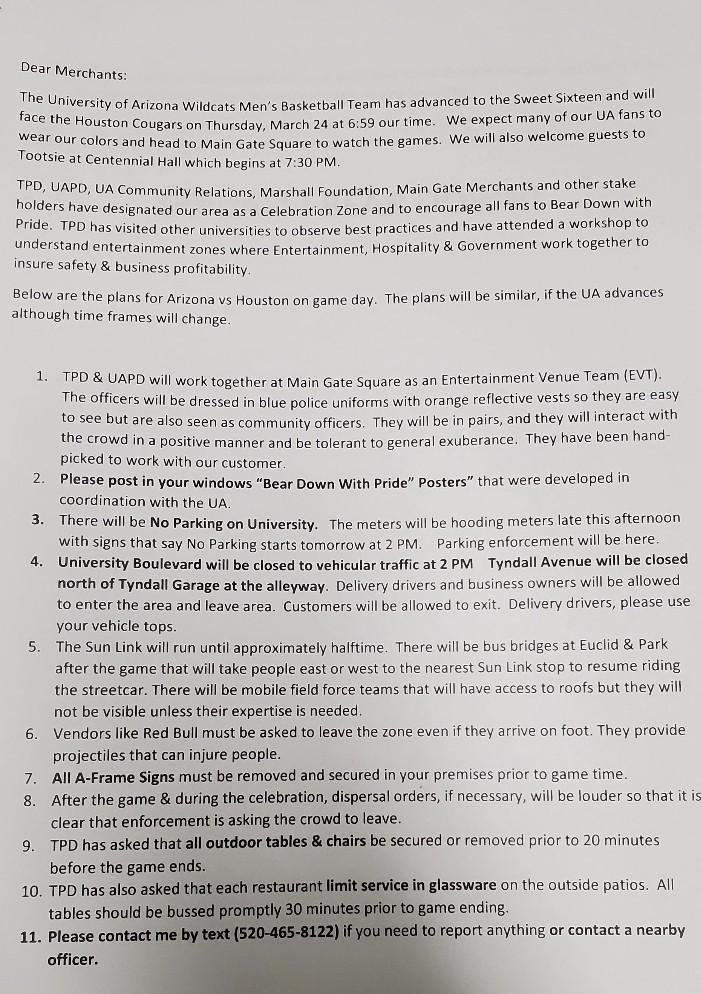
The letter, which may seem odd without historical context, is an echo of a brutal showdown between Arizona fans and local police that took place eight years ago.
Foresight gained from the 2001 riot
The 2014 riot wasn’t entirely unexpected: it had happened before. Former Daily Wildcat reporter Hannah Plotkin wrote about the preparations that local law enforcement were taking, keeping in mind the riots that occurred after the basketball team’s NCAA Championship loss to Duke in 2001.
“I think that before I started writing the article, I was not worried at all,” Plotkin told the Daily Wildcat in a recent interview, “and then once I spoke to representatives from UAPD, I did start to worry, because from my perspective, it seemed like they were preparing for conflict.”
Hearing what happened in 2001, Plotkin began to worry that police presence would incite a riot.
“In my article, I spoke to an Arizona Daily Star journalist who was present for the [2001] riot, and he said, you know, he got there and crowds were kind of dissipating. A lot of the police left and came back in riot gear, and then started essentially assaulting people who were out on the street, many of whom are journalists, or just kind of bystanders,” Plotkin said. “When I heard that, I started to worry that police presence would lead to conflict.”
Before the game, a spokesperson for TPD told the Wildcat that they didn’t foresee any conflict arising.
“We’re not expecting anything to happen,” said Sgt. Pete Dugan, TPD public information officer at the time, in Plotkin’s article. “But if anything does happen, we want units out there that are trained and ready to handle what could happen if crowds get unruly.”
Dugan must have been surprised to see the unexpected happen.
Pepper balls, police brutality, and the “Terminator of Tucson”
On March 29, 2014, the No. 1-seeded Arizona men’s basketball team lost to Wisconsin in a heartbreaking 64-63 Elite Eight game that went to overtime. The last seconds of the game were especially controversial because Nick Johnson, the team’s star shooting guard, was called for an offensive foul, and the Wildcats would have advanced to the Final Four with a win.
Later that Saturday night, disorder erupted on the streets of University Boulevard.
“When the Wildcats lost, everyone kind of poured out of the bars onto the street, and then yeah – kind of chaos ensued,” said former Wildcat news editor Ethan McSweeney, who was present covering the riot for the paper.
Fans threw smoke bombs, sparklers, firecrackers, beer and other objects at a line of riot police and motorcycles that had formed on University Boulevard. In return, police declared an unlawful assembly, launched pepper cannisters and shot pepper balls at fans, including McSweeney, according to an article from former Wildcat reporter Jazmine Foster-Hall, who also reported that 15 people were taken into custody.
“Eventually, they managed to push everybody back out of University [Blvd.], but I got hit once with one of the pepper balls,” McSweeney said.
Related: No. 1 Arizona MBB falls to No. 5 Houston in the Sweet 16
Two moments stood out that night, catching the attention of national news outlets.
One is a video of a man, identified by the International Business Times as Alexander Davidson, with his arms spread out approaching officers who shot him with pepper balls and eventually pulled him behind the police line. Foster-Hall reported that officers held him in place while “one officer kneed [Davidson] once in the stomach, then punched him three to four times in the stomach and torso before he fell to the ground.”
The video of Davidson was posted on the now-defunct social media app Vine and was also featured in NPR, Slate, Buzzfeed and Metro.
A tweet from an individual named Jacob Cooper showed the welts caused by the pepper balls shot at Davidson, who was later dubbed by sports news site Deadspin as the “Terminator of Tucson.”
The other moment that also caught the attention of several major media outlets was a video of an officer in riot gear blindsiding a young woman, knocking her over into a park bench. One witness, Andrew Brown, told the Arizona Daily Star that the girl hadn’t appeared to do anything to incite the action.
“I just felt like it was a really aggressive use of force,” Brown said in the Daily Star article. “It was one of the most aggressive things I’ve seen in person in a long time, and from my own experience, I don’t feel like the girl posed any threat to the officer and there was no verbal communication before the incident.”
A Wildcat article authored by McSweeney stated that the people standing near the woman when she was knocked down began yelling at the officer, shouting, “What did you do that for?”
Aftermath and looking back
The video and accompanying criticism that followed led to an internal investigation at TPD. The department received three complaints regarding officers’ actions, according to McSweeney’s article, including one about the woman in the video.
Kendal Washington White, dean of students at the time and at present, released a statement in which she said TPD’s response was necessary.
“The Tucson Police Department took the actions necessary to ensure public order, safeguard property and protect people,” White said, according to McSweeney’s article.
The incident during the riot was covered by the Daily Star, Business Insider and Buzzfeed.
When asked what her personal reaction to the riot was, Plotkin said she had felt frustrated with law enforcement’s response.
“I think what my personal feelings was, I was very upset. Like I was angry at the police response. It seemed like really excessive force to me, and I think in general, there was a feeling in the newsroom that it was not an appropriate response by UAPD for what was happening.”
This year, officers attended workshops in entertainment, hospitality and government and wore blue police uniforms with orange reflective vests to be clearly visible.
“They will be in pairs, and they will interact with the crowd in a positive manner and be tolerant to general exuberance,” the Marshall Foundation notice stated.
The streets remained relatively quiet Thursday night, possibly due in part to the preventative measures. Regardless, Plotkin asserted that the criticism and lessons learned from 2014 are important.
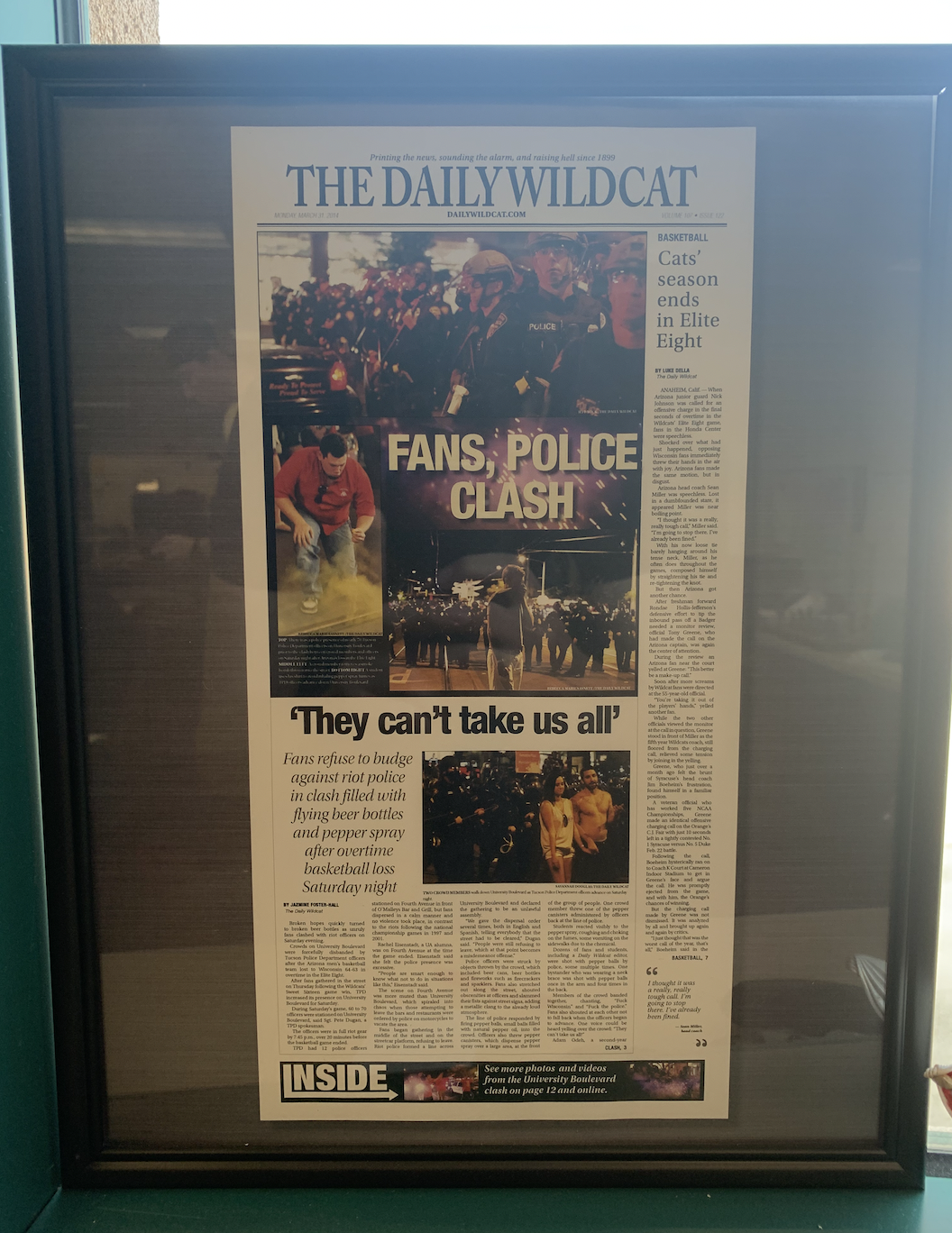
“I’m glad that there’s continued, you know, kind of interrogation and analysis of these of these different measured responses by UAPD to try and anticipate potential crowd control. I just think it’s something that we need to continue looking at because, from my perspective, I think frequently police presence escalates situations,” Plotkin said. “Some of these preventative measures may have actually been the impetus for violence and, you know, a continued and growing distrust of the police, which does not help anyone.”
The Wildcat news team that semester won the 2014 National SPJ Mark of Excellence Award for Breaking News Reporting for their coverage of the clash between fans and police.
Today, Sweeney works as a page editor for the media company Gannett. Plotkin works at the UA’s Cracchiolo Law Library as a Library Services Associate and is pursuing an M.A. in Library and Information Science.
Today, Foster-Hall’s front-page article sits framed in a window of the Wildcat newsroom.
Follow Kristijan Barnjak on Twitter



